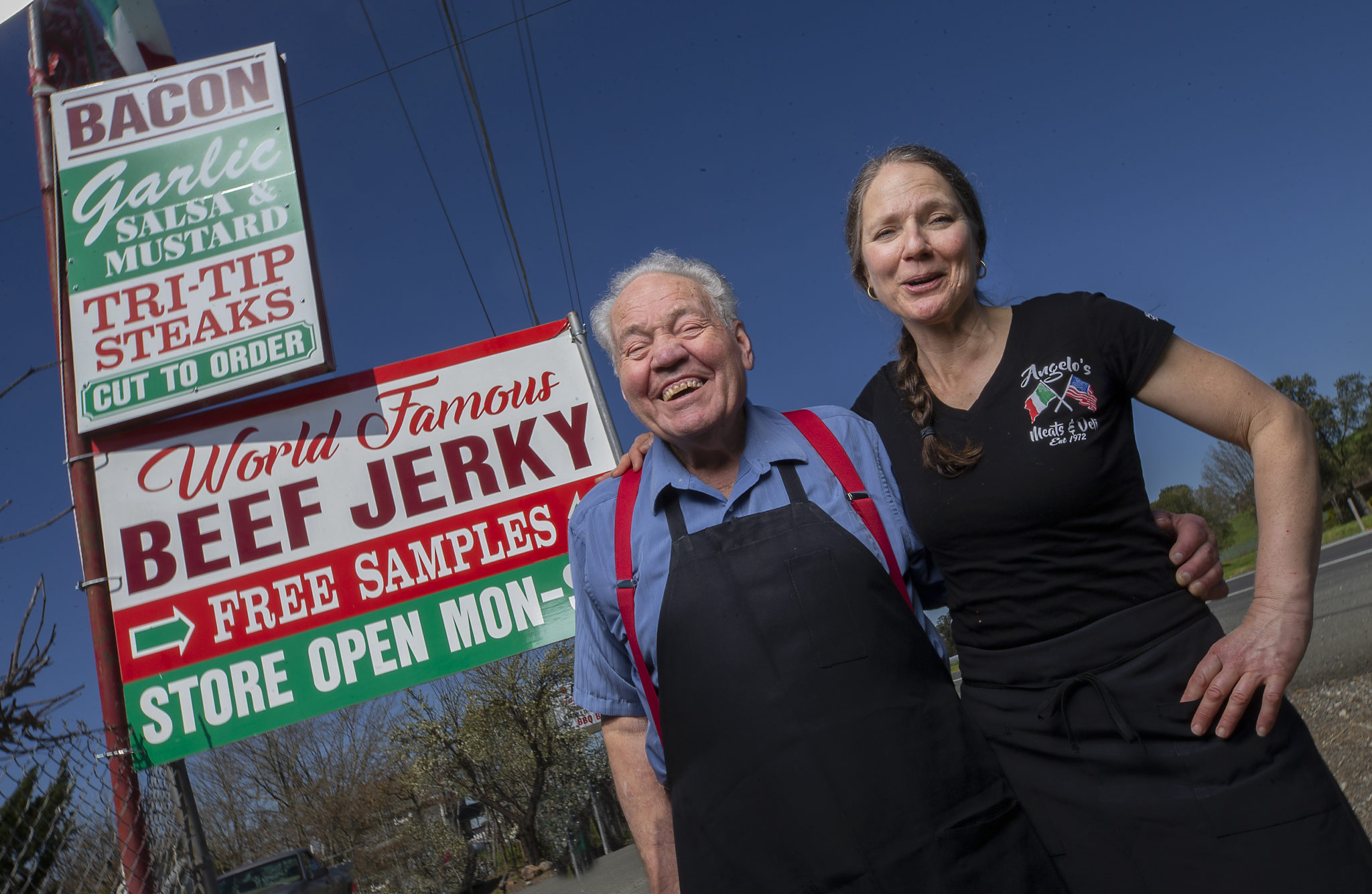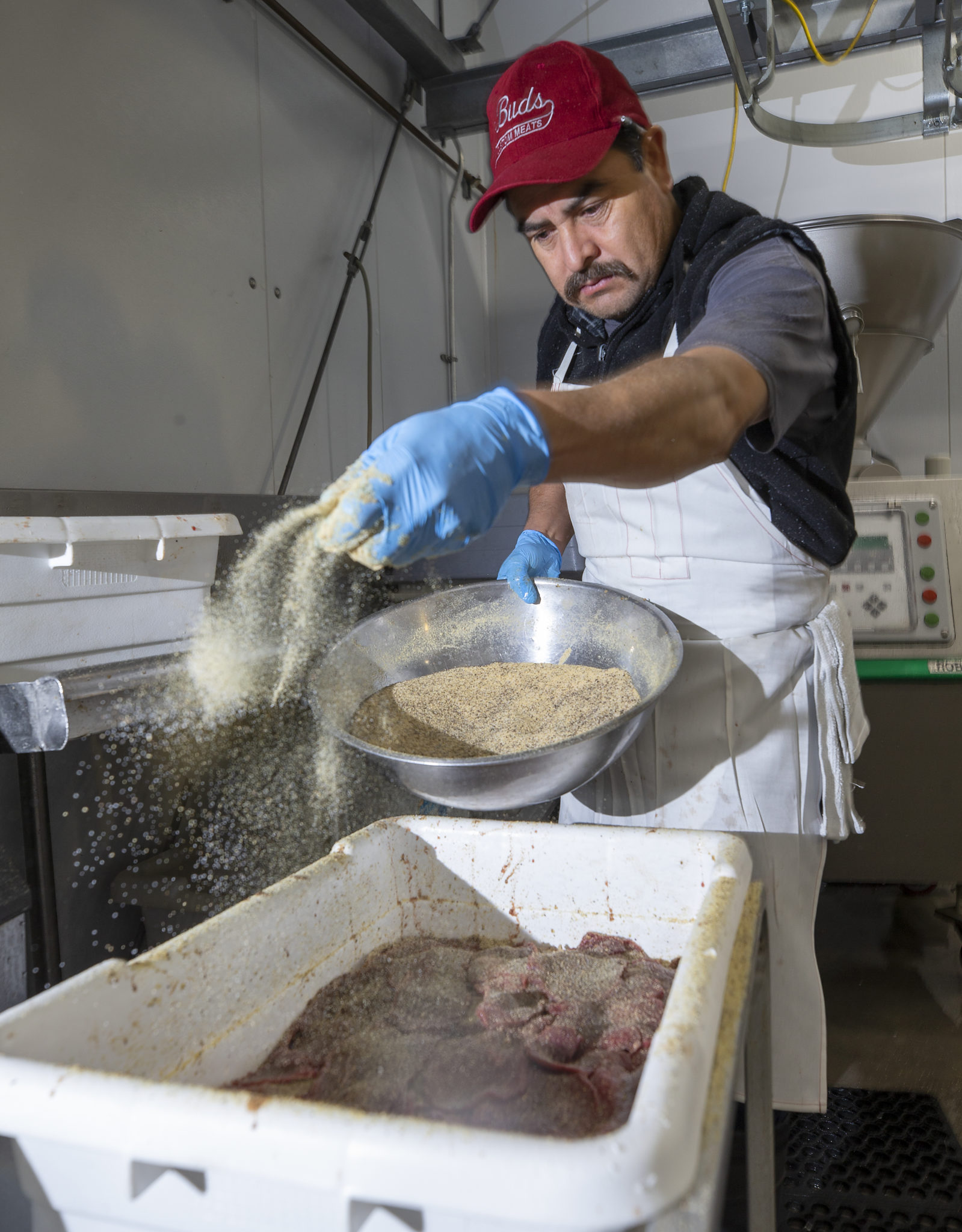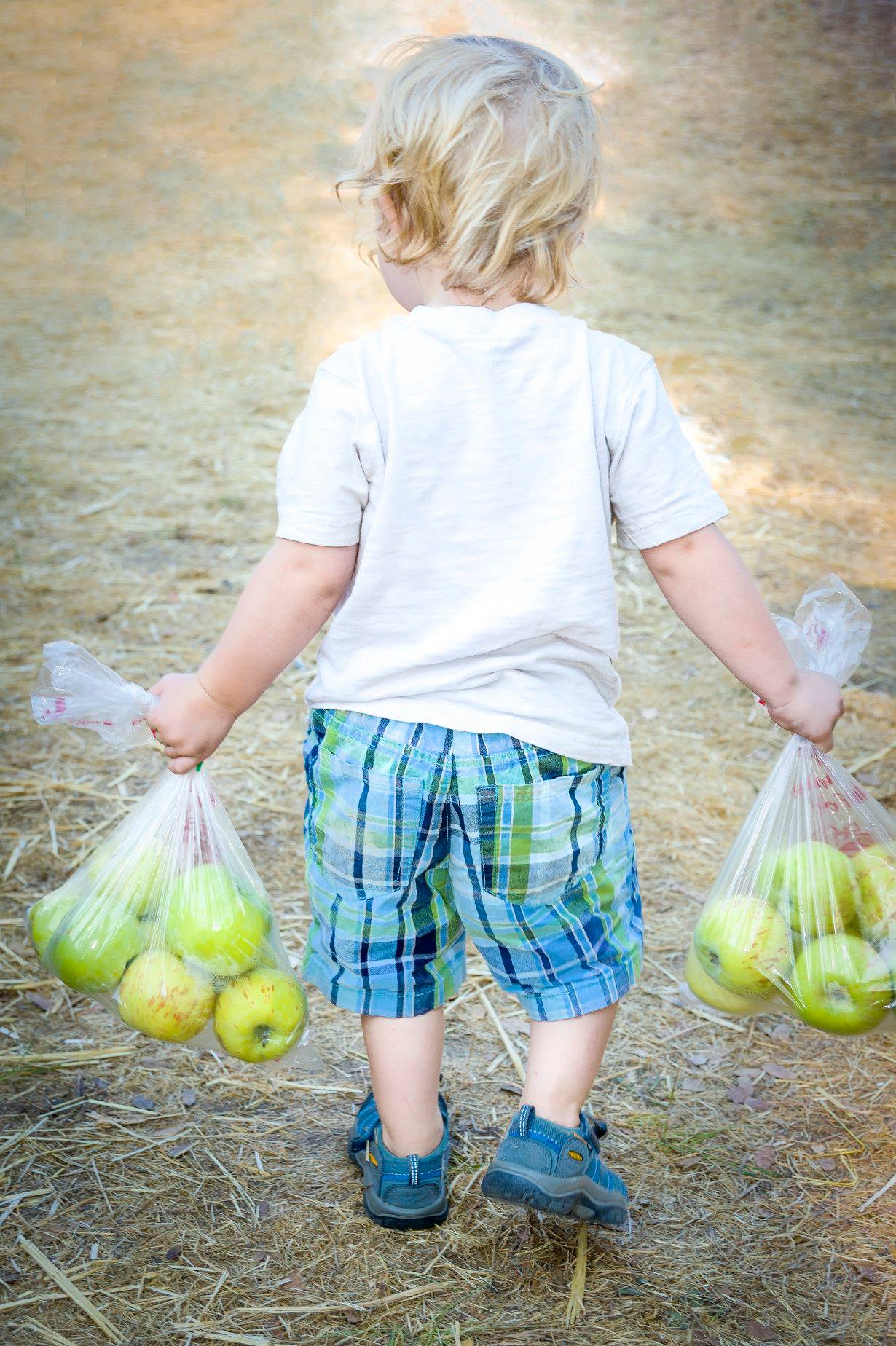Best Sonoma Wineries to Visit Right Now, August 2019



Long before Thomas Edison, Louis Pasteur, Prometheus, and the advent of fire, there was jerky. That chewy, dried hunk of meat coveted by cavemen and truckers alike.
From paleo moms to hiker dudes and their ravenous kids, the salty tang of cured meat has come a long way over the centuries.
Today, thanks in part to high-protein diets like keto and paleo, the jerky industry racks up more than $1 billion in annual sales, according to the industry market research group IBISWorld.
From the truck stop to Whole Foods, there are so many choices — teriyaki, salmon, buffalo, grass-fed, even mushroom jerky — it’s hard to know where to begin. But in an age when Jon Sebastiani has sold his Sonoma-based Krave jerky to the Hershey company for a reported $220 million, a pair of local, small-batch jerky purveyors — each with their own methods of flavoring and drying raw meat — seems a good place to start.
“This is the secret,” says Angelo Ibleto, 85, as he walks into the smoky backroom of Angelo’s Meats in Petaluma, where he’s drying a 200-pound batch of jerky.
The former Italian policeman, wearing a tattered Greek fishing cap, smiles like a kid on a scavenger hunt as he points to a large bowl suspended a few feet off the ground. “It’s my special Italian creation, also known as a cement mixer. I just put in a stainless steel pot, and now I can put my meat in there with the spices and enough moisture depending on the quantity of meat.”
It’s where the jerky takes a quick bath, mixing and tumbling for about 10 minutes before spending the next seven hours drying on racks at around 150 to 160 degrees.

Ibleto has just finished prepping a batch, something he does three times a week, mostly to supply his Sonoma store — Angelo’s Wine Country Deli, which sells as much as 30 to 40 pounds of jerky a day. Originally experimenting with American beef, Ibleto now uses only grass-fed New Zealand flank steak for all his beef jerky.
After 47 years in the meat business and 27 of those making jerky, Ibleto swears by the taste test as the only way to truly appreciate his jerky.
“They say one picture is worth a thousand words,” he said. “But if you put it in your mouth, you know there’s no B.S.”
One of his employees brings over a few pieces of jerky, cut into bite-sized chunks, and we sample the goods.
A little on the dry side, the plain jerky is still the best way to appreciate the unadulterated taste of the grassfed New Zealand flank steak. But the savory Teriyaki Pepper might be the most complex, packed with a moderate spicy pepper bite and the syrupy moisture of teriyaki.
Ibleto makes nine types of beef jerky, including Cajun and VIP (flavored by the Wine Country fireand- ice combo of hot pepper and white wine), and two kinds of turkey jerky.
At some point during the tasting, his daughter Angela Dellinger, who is co-owner and manager of Angelo’s Meats, walks by and chimes in, “I’ll buy jerky anywhere — at Trader Joe’s, at Costco, wherever — and I’ve never seen another jerky that actually looks like ours, like a piece of steak, dried.”
Ibleto just smiles, as if to say, “See? I told you so,” and pops another piece in his mouth, even though he says he usually spits it out like an expert wine taster.
Just up the road in Penngrove, not far from Sonoma State University, Matt Gamba makes 10 kinds of jerky at Bud’s Custom Meats that range from wild pig, venison, and buffalo to spicy mixes of Bloody Mary, Hot Teriyaki, and the best-selling Cowboy Candy Beef.
In his office, wearing a camouflage hat and jacket and armed with a pair of yellow-handled, desk-top scissors, he snips a couple pieces of grass-fed beef jerky, and pops a piece in his mouth.
“We don’t add any moisture to this,” he says, working his way through the chew. “It’s just salt, pepper, and garlic.”

Not surprisingly, it’s super-dry and thin, almost papery, and takes a while to gather moisture in the mouth. When he moves on to sample the bestselling Cowboy Candy, he comments that “what stands out for me is that the flavor stays. It doesn’t drop off. Some jerkys you’ll bite into, and you work it and start getting some flavor, and then it just falls off and then you’re just chewing on meat.”
In contrast, when you taste Gamba’s Bloody Mary jerky, the taste buds light up with Worcestershire sauce, tomato, and spices, almost Cajun in tang, but without the kick.
“This one is very expensive to make,” he says. “It costs a fortune, but it brings people in the door.”
Gamba has seen local appetite for jerky fluctuate over the years, based on word of mouth, fad diets, and Yelp reviews. But at its core, it exerts an ancient appeal that reaches back into our DNA.
“I think it’s probably a primal instinct and what brings us back to that primal urge — where man is from and what man survived on back in the day,” he says.
While jerky only accounts for about 5 to 10 percent of his butcher and meat business, Gamba, 58, has been experimenting with different flavors, starting with teriyaki in the early 1980s. Cowboy Candy is the only USDA-licensed jerky he can sell in other stores outside Bud’s.
“Just the humidity and the length of time you soak or dry can change the whole flavor profile,” he says, strolling back to the smokehouse, where Bacon Candy strips are about to go in after a round of hams are done smoking.
At the moment, 360 pounds of jerky meat are soaking in bins. He typically marinates the grassfed beef jerky for a day and around three days for all other varieties, preferring a stationary bin rather than a tumbler. At Bud’s, they usually smoke around 80 to 100 pounds a week, cooking it at 160 to 170 degrees for around six hours.
For his beef jerky, Gamba uses mostly inside round meat, trimming any excess fat. But he also makes a flank-steak jerky that’s very lean. And then he makes a Bacon Candy that’s real fatty. To savor it, he says, “you’ve gotta love fat.”
So, after more than three decades of making jerky and cultivating a loyal following, does he ever worry about employees stealing his secret recipes? Not at all.
“Have fun,” is his only advice, he says with a laugh.
“It’s a pain in the ass. Good luck. I don’t recommend it,” he adds. “They see what I have to go through here making this stuff, and they don’t want any part of that.”

Back in the 1940s, long before it was world-renowned for its vineyards, Sonoma County was recognized as a major commercial apple-growing center. Apple trees once covered over 14,000 acres of the county, 10,000 of them devoted specifically to the Gravenstein. Heavy producers but a climate-sensitive varietal, “Gravs” — as they are affectionately known by locals — thrived in the sandy soil and cool summers around Sebastopol, guaranteeing the farmers a reliable harvest. The orchards were being planted at such a clip that state Route 116 was dubbed the Gravenstein Highway.
Flash forward to the 1980s, when 14 different countries were now growing apples, driving prices so low that many local farmers called it quits. This, and the fact that Gravensteins do not ship well, left the county with only 3,000 acres of apple orchards, a third of those devoted to Gravs.

Today, the forbidden fruit is making a comeback, and there is much to celebrate. Eighty-five percent of west county orchards have gone organic, and in 2005, Slow Food USA declared the Gravenstein apple a Heritage Food, a designation that aims to preserve local foods and traditional cooking styles. There’s also an increasing interest in hard cider, so apple growers are once again able to turn a profit. As for Sebastopol, the community has been celebrating Gravs for the past 45 years with the annual Gravenstein Apple Fair.
On August 17 and 18 at Ragle Ranch Regional Park, under the shade of the majestic oaks, fairgoers will gather to applaud all things apple.
Like music? Thirteen bands on two stages offer everything from zydeco to jazz to blues to mariachi.
Enjoy the challenge of a competition? Test your skills at apple juggling or caramel apple eating. Libations more your thing? Mosey on over to the Craft Cider Tent. Learn to make cyser, a cross between mead and apple cider, or create a bee habitat from a log, using old-fashioned hand tools, in the DIY arena.
Over 100 vendors will be on hand to tempt with home and garden items, ceramics, art, and jewelry. And children can delight in the petting zoos, storytelling, singalongs, stilt walkers, and puppet shows. Be sure to come hungry, ready to sample Grandma’s Apple Fritters (made by actual grandmas and grandpas), as well as a few of the over 20,000 pounds of apples, and a slice of one of the 1,200 apple pies that will be sold over the weekend.
So what does the starring fruit actually taste like? Gravs are crisp and tart, with a trace of honey.
They are pick-and-eat apples, their flavor somehow capturing that exquisite moment when the dog days of summer give way to the arrival of fall.
gravensteinapplefair.com

It’s summer. The sun is shining, the sky is blue, and you’re stuck inside scrolling on your smartphone looking at people having a great time outdoors. Sounds familiar? Well, you’re not alone.
The average American spends nearly four hours a day staring at computer, tablet and smartphone screens, and an additional four hours or so watching television, according to the financial news site MarketWatch. Medical researchers, cited in a Forbes article, recently concluded that the heaviest smartphone users exhibit “the greatest degree of depression, anxiety, loneliness, and isolation.” The antidote? “We need to devote time to ourselves, nourish our brains and engage in exercise,” as well as “reconnect with nature,” writes the author of the article, an emergency physician.
Needless to say, it’s hard to kick digital addiction (after all, your phone is designed to keep you constantly engaged). Thankfully, Sonoma County offers plenty of ways to stimulate your senses sans screens. If you want to take a break from your computer, tablet and phone, click through the gallery for tips on how to do a digital detox.

It’s time to get excited about apples! Sebastopol’s celebrated Gravenstein crop is here and there are ways to get in on the eating action. Here are a few products from Sonoma County stores to help you celebrate all that juicy flavor—click through the above gallery for details.

Bohemian style (aka Boho Chic) is an enduring trend in Sonoma County. That may be because of its satisfying blend of casual, rustic and romantic qualities and how it mirrors so well the local lifestyle. Here are some great Boho finds for your home and wardrobe to give your space or your look a relaxed and pretty vibe—click through the above gallery for details.

The owner of Sea Thai Bistro and Sea Noodle Bar has paired up with popular sushi burrito food truck chef Takeshi Uchida to create Raku Ramen and Rolls in Santa Rosa’s Montgomery Village. More than just a ramen shop, Shoubu Japanese’s Uchida has created a menu inspired by his sustainable vision for Japanese cuisine — and it’s something to write home about.

We first met Uchida 12 years ago when he was creating “secret sushi” at the Odd Fellows Hall several days a week. The former Hana Japanese sushi wunderkind has a deep passion for the food of his homeland, but in recent years significantly changed his diet and the menu he created for his food truck to use only sustainable fish, organic and GMO-free ingredients and generally re-envision some of the less-than-sustainable practices of some sushi spots.
With Sea Thai’s Chef Tony Ounpamornchai, the two have created a clean, minimalist fast-casual izakaya featuring tonkotsu (pork), shoyu and vegan ramen bowls ($15-$16) with high-quality ingredients, along with rice bowls and a small selection of rolls and salads. We loved the cloudy tonkotsu with braised pork belly and organic veggies, along with the Poke Don (wild-caught tuna with chili sesame soy, greens and spicy veganaise, $16). The raku roll includes crab, tuna, avocado and kaiware sprouts. Don’t miss the Zangi, Hokkaido style free-range chicken ($8), or the Veggie Miso Mabo Don, made with organic tofu, tempeh, eggplant and spicy bean sauce. ($12).

Lots of great vegan and vegetarian choices here, especially if you’re a stickler for high-quality ingredients.
We’d love to see even more exploration of Japanese favorites, including the return of Uchida’s sushi burritos, miso soup and homestyle classics we enjoyed on the Shoubu truck — which is now in retirement. Early Yelpers dinged the restaurant for high prices, but owners say they’ve dropped some prices and are now offering mini rice bowls for $5. We’re not stoked about the upcharge on ramen for things like nori, bamboo shoots and mushrooms, but it is not exactly out of line with the cost of organic ingredients.
Raku Ramen & Rolls: 2424 Midway Drive, Santa Rosa, 707-623-9668.

The official news of Michael Mina’s taking over the restaurant at The Lodge at Sonoma has finally been released. The celebrity chef will open Wit & Wisdom in early 2020, featuring hearth-oven cooking. News had been circulating for months among staff that the Bay Area toque would be opening a space at the resort, but Mina reps denied the news until this month.
“A Wine Country project has been a long time coming,” says Chef Michael Mina. “I’ve always wanted to expand to this incredible part of Northern California.” We’ll look forward to more news as the restaurant develops.
It’s a hot and cool new happy hour in Sebastopol as Ramen Gaijin serves up deals on raw oysters ($1.50), karaage (fried chicken) with miso ranch and lemon ($6), togarishi fries, grilled trumpet mushrooms ($3), saimin noodles with “house spam” ($10) along with sake, cocktails, beer and wine from 3:30 to 5:30 p.m. Tuesday through Thursday. Deal! 6948 Sebastopol Ave., Sebastopol, ramengaijin.com.
More Sebastopol food news: Lowell’s is changing up things, closing on Tuesday and Wednesday and ending breakfast service. They’ll be open from 11a.m. to 2:30p.m. for lunch and 5 to 9p.m. for dinner. Brunch will be available on the weekend. One of the biggest changes, however, is the abandonment of the 20 percent service charge. Owner Lowell Sheldon hoped that the charge would allow for better wages and benefits for restaurant employees, but the upcharge irritated many customers. Instead, they’ll be reducing it to a 3.5 percent charge for healthcare and sustainability charge. 7385 Healdsburg Ave., Sebastopol, lowellssebastopol.com.

Take a bite out of Sonoma County’s agricultural past at the annual Gravenstein Apple Fair (August 17-18) in Sebastopol. Underneath the oaks of Ragle Ranch, the community gathers for a down-home harvest celebration that includes pie-eating contests, sheep shearing, cow milking, cider making, live music and top-notch food, cider, wine and microbrews. Come hungry to enjoy food from more than 25 restaurants and vendors including Ramen Gaijin, Black Piglet, The Whole Pie, Gravenstein Grill, The Farmer’s Wife, Lowell’s, Mateo’s Cocina Latina and Jam’s Joy Bungalow.
With a focus on food and farming, the fair is a charming step back into the history of Sonoma’s West County, when orchards rather than vineyards dominated the landscape. With a focus on the sweet and delicate Gravenstein long cultivated in the region, it’s also a success story of bringing an heirloom fruit back from the brink of extinction.
Thanks to the proliferation of artisan cider makers, heirloom apples like the Gravenstein are once again in high demand with local orchardists carefully maintaining and protecting these local treasures. You can taste some of the best producers in the Artisan Cider tent at the fair and throughout Sonoma County Cider Week (Aug. 17-25) that kicks off at the fair and continues at restaurants, tap rooms and tasting rooms throughout the county. We’re special fans of Tilted Shed (who helped lead the charge for using local heirloom apples for cider), family-run Ethic Ciders and the ever-quaffable Golden State Cider.
Entrance to the Gravenstein Apple Fair is $15 for adults, $10 for kids and $12 for seniors and veterans and can be purchased in advance at gravensteinapplefair.com. Admission to the Artisan Tasting Lounge, which includes a special meet and greet with farmers and special food tastings, is $25 at the door and $20 in advance. Details on the Sonoma County Cider Week are at sonomacountyciderweek.com.

Happy hours aren’t a one-size-fits-all kind of thing. In fact, they’re a highly individualized adventure that says a lot about who you are, the people you spend time with, and whether you’re out for a quick buzz, a confab, or a romantic rendezvous.
Throughout Sonoma County, you can find just about any kind of happy hour — from dives that reek of beer and despair to clubby enclaves serving trophy wines and caviar. But that’s not what’s on this list of 20 favorite spots to score a drink on the cheap. Instead, we’ve sifted through hundreds of options to find bars and restaurants that offer great drinks, great food, and great values — for coworkers, friends, and lovers alike. Click through the gallery for details. Salud!